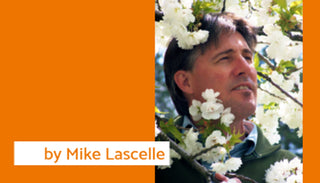The Oxford dictionary defines a groundcover as low-growing, spreading plants that help to stop weeds from growing; but in reality, it is that secondary task of attempting to cover open soil that most of us are attempting to achieve. Of course, if the space you are trying to envelop is the cracks between a slate patio or adjacent to walkway pavers, then low-profile plants that can handle foot traffic such as ‘Elfin’ Thyme, Corsican Mint (Mentha requienii), and Irish Moss (Sagina subulata) are essential choices, but quite often this isn’t the case. I saw many examples of this during my first experience as an estate gardener taking care of a five-acre show garden (on a 40-acre estate) built around a ravine with limited walkways, retaining walls, steep slopes, a stream, and multiple rockeries. Here we used mass plantings of hardy perennials and small- to medium-sized shrubs with the occasional Vine Maple (Acer circinatum) to keep the slope intact and the weeds at bay.
Lately, I have been reminded of this useful technique of utilizing perennials, grasses, and spreading shrubs as groundcovers by the many residential and commercial landscapes I encounter daily, and I thought I would share a few of these in order to inspire you along these same lines.
Let It Weep
(Acer p. dissectum ‘Red Dragon’ / Hakonechloa macra ‘Aureola’)
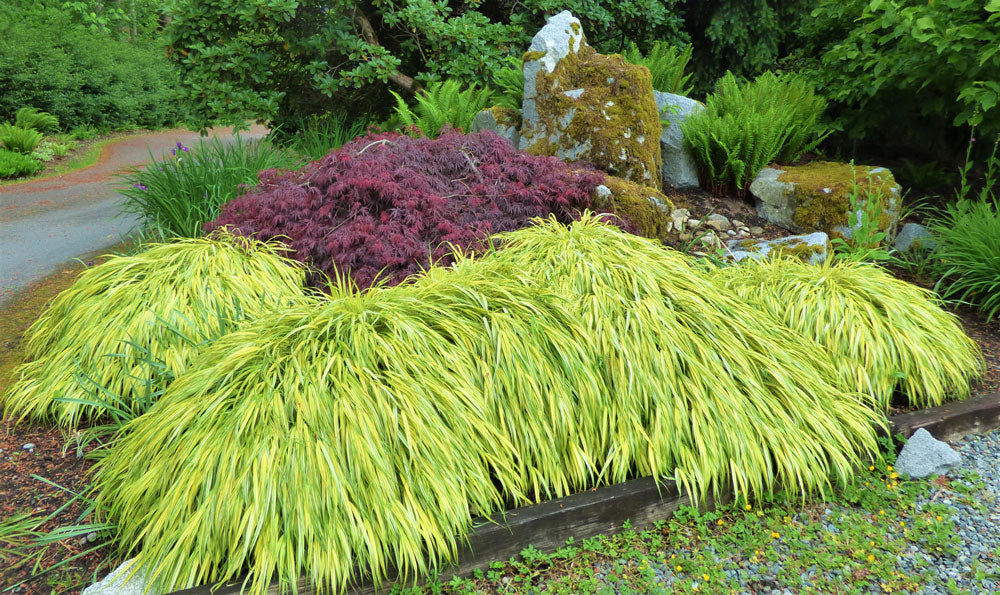
I cycle by this driveway entrance garden every morning and have always been impressed at how the weeping forms of both the Japanese Maple and the Hakone Grass complement each other, as do the burgundy and gold-striped foliage. Both allow for a view of the beautiful moss-covered granite boulders in the background, which are sparingly accented with Sword Fern (Polystichum munitum) and Siberian Iris (Iris sibirica).
Opposites Attract
(Lonicera pileata / Helictotrichon sempervirens)
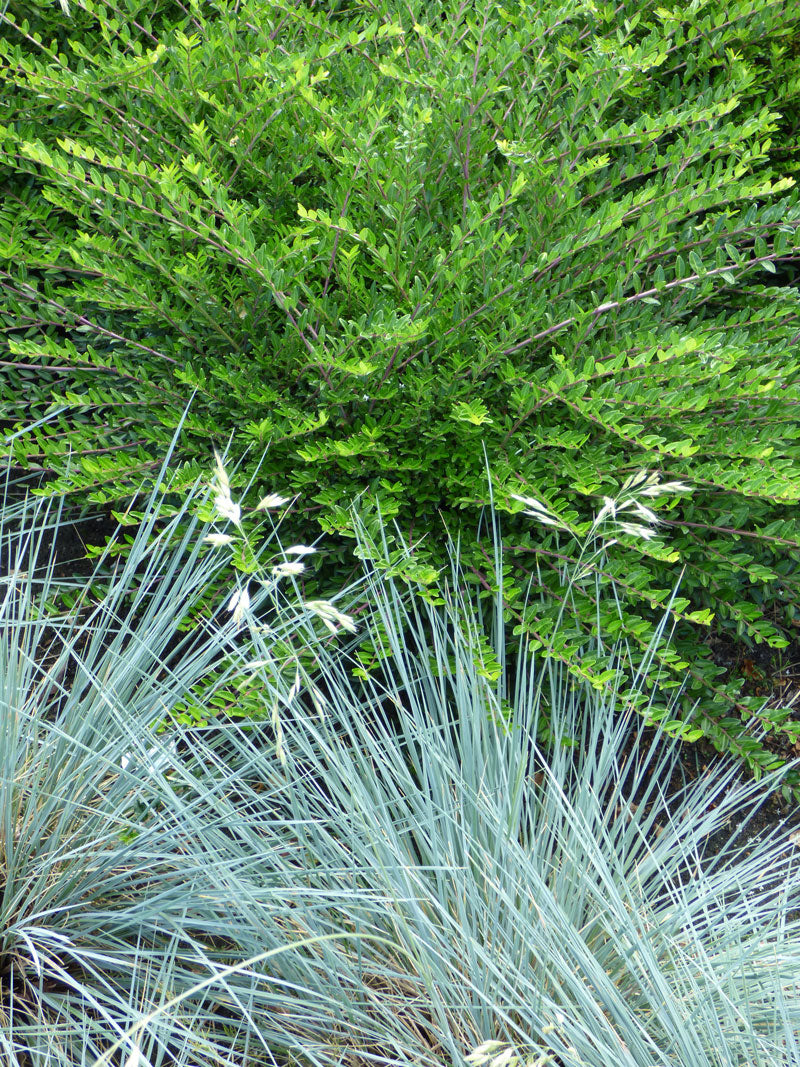
One would think that a combination of the glossy green-leaved Box Honeysuckle and the powdery-blue spiky foliage of Blue Oat Grass would be a disastrous combination, but it is the contrast of texture and colour that really stands out here. Both these species are extremely durable, as evidenced by this planting in our local Walmart parking lot, and they have the additional benefit of being evergreen year-round.
Morning Glory
(Geranium ‘Johnson’s Blue’ / Hosta ‘Frances Williams’)

I stumbled upon this lovely combination of two old perennial standards while visiting the public Inspiration Garden in Coquitlam. It was located in morning sun exposure, which kept the starry blue blossoms of the hardy geranium in a pristine form where they nicely contrasted the golden edges of the heavily corrugated Hosta foliage.
Silver and Gold
(Veronica ‘White Wands’ / Berberis thunbergii ‘Aurea Nana’)

This streetside planting in downtown Maple Ridge caught my eye many times while I was driving home. Both of these plants prefer full sun exposure in order to keep the powdery mildew at bay in the Veronica and maintain the deep gold intensity of the Japanese Barberry foliage. Again, the contrast of the abundant silvery-white Veronica blooms (from early to midsummer) against the intense golden-yellow foliage of the Dwarf Barberry becomes the focus of our attention.
High and Dry
(Nassella tenuissima / Perovskia atriplicifolia)
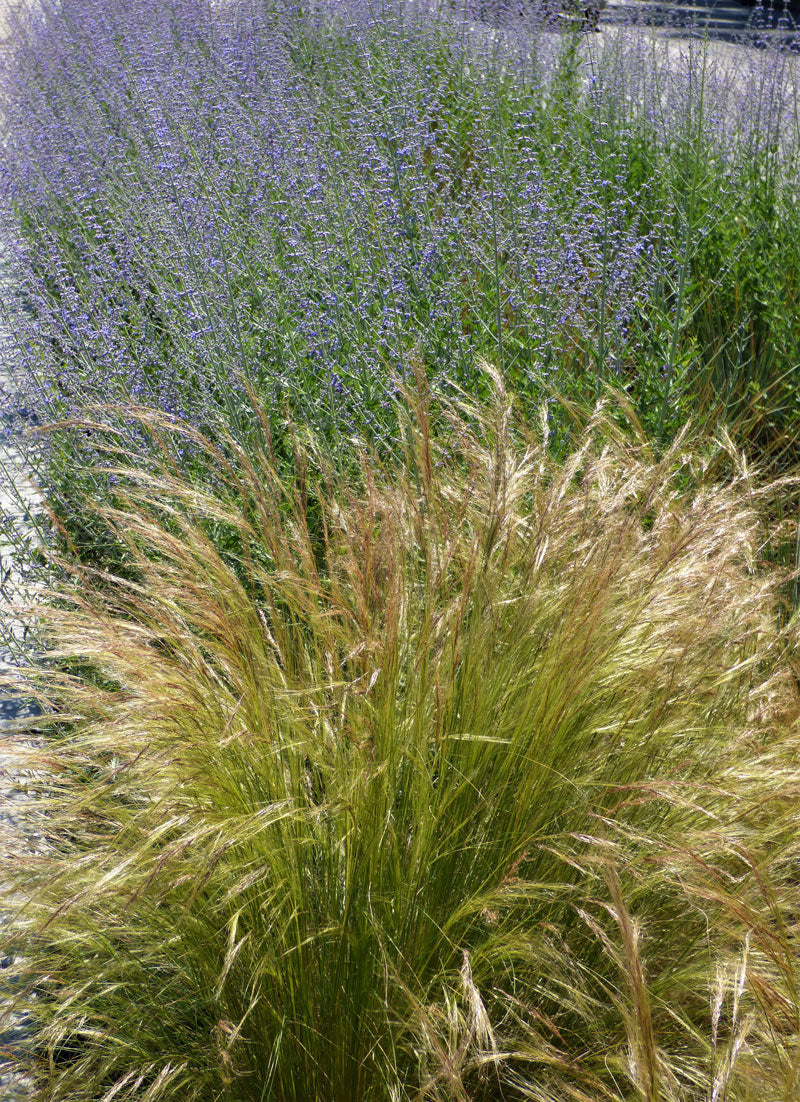
I was driving to get my second COVID vaccination in the Austin Heights neighborhood of Coquitlam when I noticed this boulevard planting. This simple combination of the drought-tolerant Russian Sage and Mexican Feather Grass provided a subtle definition between the opposite lanes, while also imparting a lovely sense of movement, as both swayed gracefully with each passing vehicle.
Attractive Rivalry
(Euonymus fortunei ‘Moonshadow’ / Isotoma fluviatilis)
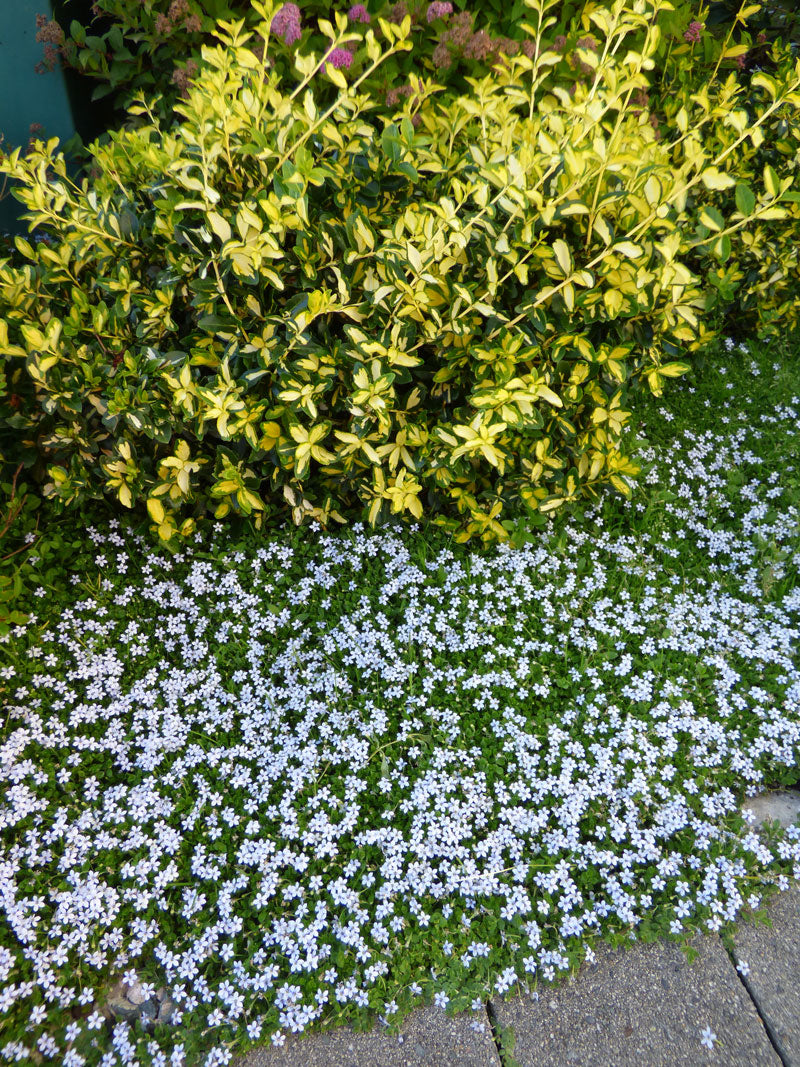
This brings us to the front yard of my townhouse, where low maintenance is my prime directive as I don’t have a lot of spare time to weed the garden. The Blue Star Creeper flanks both sides of the Roman paver sidewalk that meanders to my front door (it also grows in the paver cracks) where it blooms from spring to late fall. Holding it at bay immediately behind it is the equally attractive ‘Moonshadow’ Euonymus with its evergreen foliage of deep green, lime, and gold, which I keep pruned to about 18” tall.
Go With the Flow
(Picea abies ‘Pendula’ / Thymus praecox)
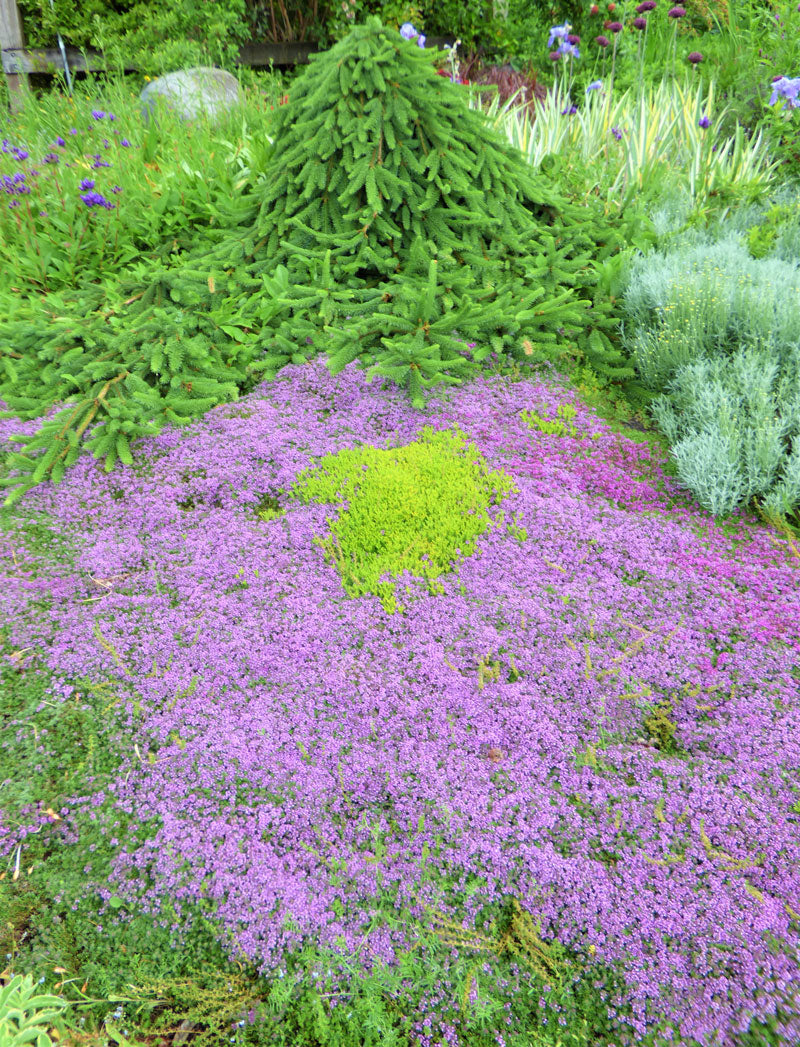
Here is another stunning plant combination that can be found at the entrance to the Inspiration Garden in Coquitlam. This display is anchored by a mounded specimen of Weeping Norway Spruce which has been enveloped on one side with a Pink Creeping Thyme, with the former seemingly flowing right into the carpet of the evergreen Thyme. The slight slope to this planting makes it even more effective, as does the background of Variegated Sweet Iris (Iris pallida ‘Aureo-Variegata’).
A Riot of Colour
(Coreopsis verticillata ‘Zagreb’ / Leucanthemum x superbum ‘Snow Lady’)

This Coquitlam street-planting stopped me in my tracks with its irresistible riot of perennial colour. Both the dwarf Shasta Daisy and the golden-yellow Tickseed bloom for months on end, and when planted in mass will definitely keep the weeds at bay. The tiny Nest Spruce (Picea abies ‘Nidiformis’) here runs the risk of being overwhelmed by the adjacent perennials, while the precocious Geranium ‘Rozanne’ holds its own with its brilliant purple blossoms borne all summer long.
Well, I hope these eight examples inspire you to do a little experimenting of your own with perennials and grasses, and shrubs used as ‘taller’ groundcovers.


